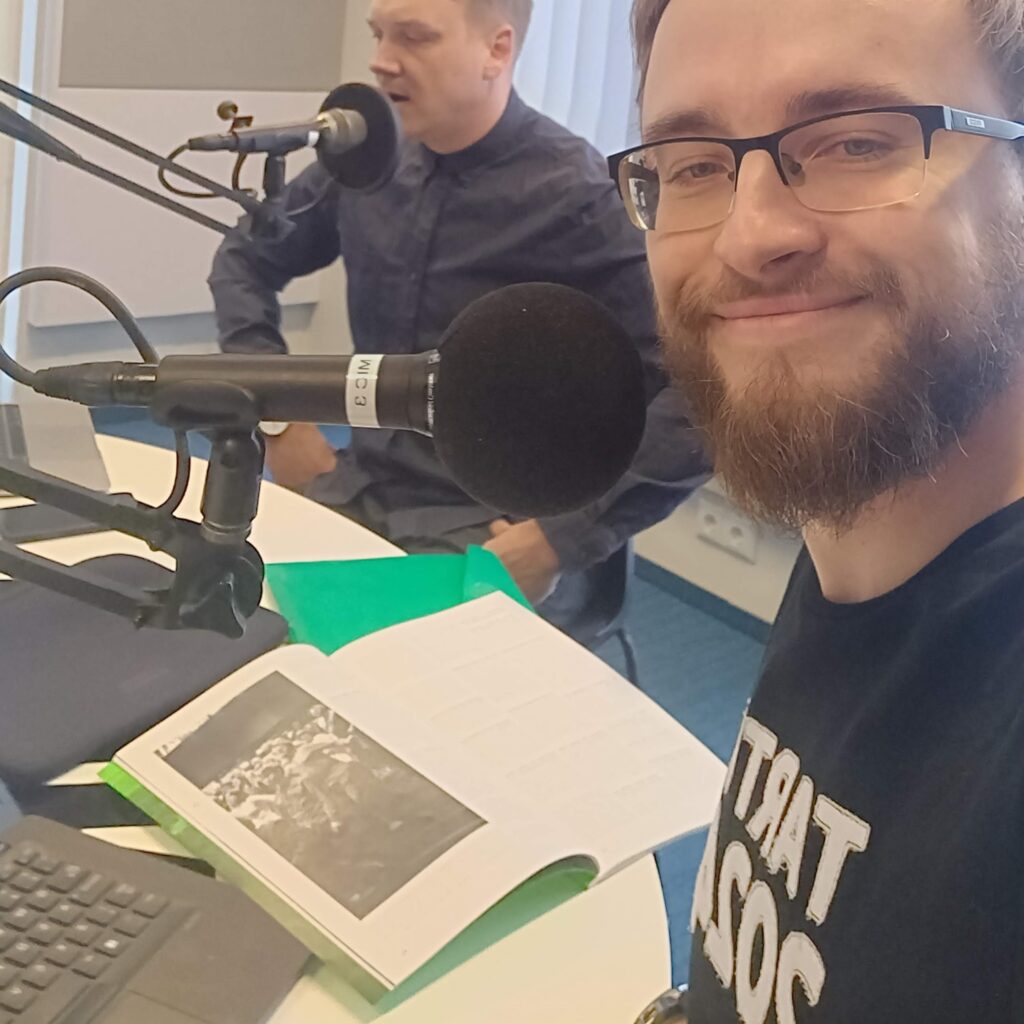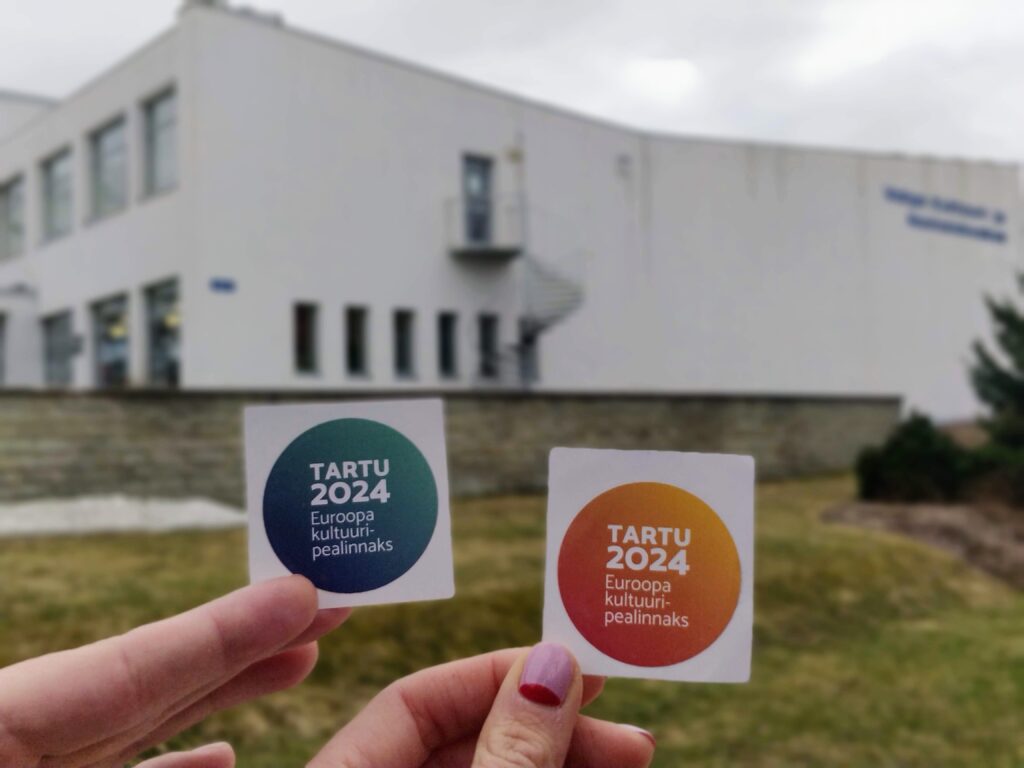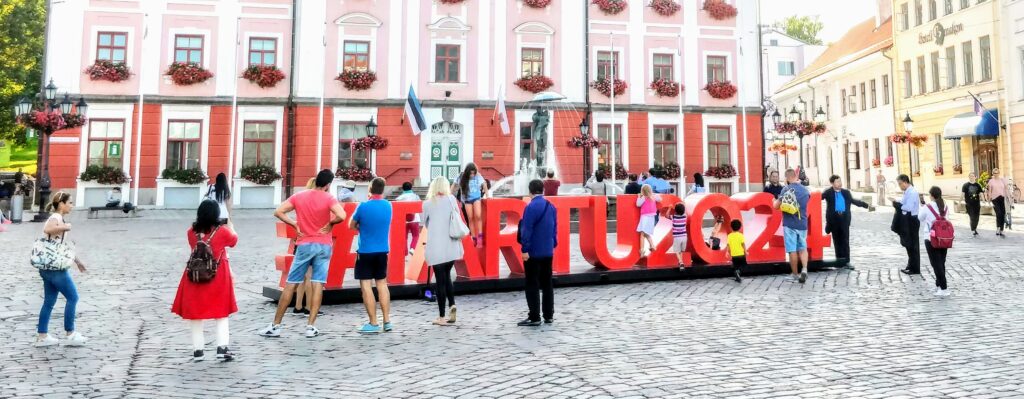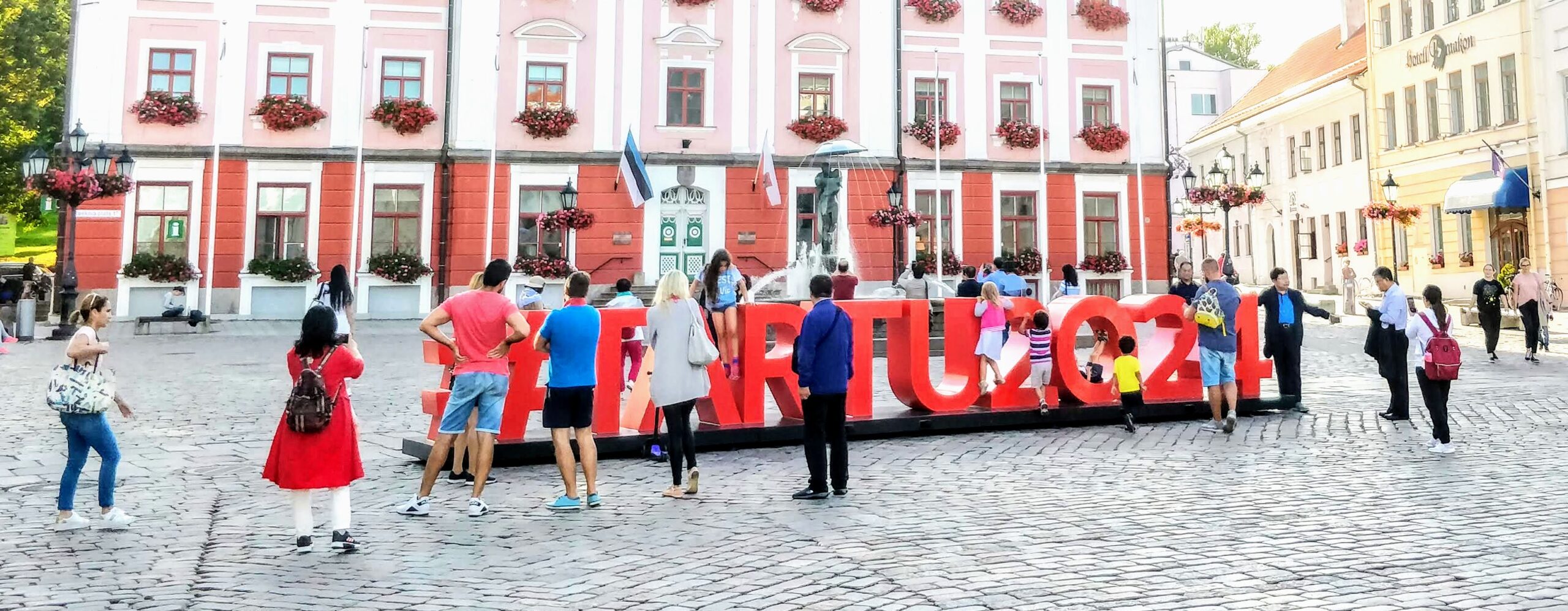The Challenge
How would the people of Tartu and its visitors start using the hashtag #Tartu2024?
By the Summer of 2019, Tartu and Southern Estonia had been working already for two years to get the European Capital of Culture 2024 title. We were in the final round of the competition which was very much a vision-creating, and application-writing process.
We could not yet offer actual Tartu 2024 art or entertainment experiences to any audiences. The focus was to engage culture professionals, community leaders, and politicians, and speak about the co-created vision.

So, how could tourists and locals still engage with Tartu 2024? How could we persuade them to use the #Tartu2024 hashtag when sharing their Tartu impressions on social media? How could we show in strong symbols to the European Capitals of Culture Jury (who were about to visit Tartu for evaluation) that we really want it?
As the candidacy team’s head of communication and marketing, I was facing these challenges.
The Solution
I set out to look for a playful and creative way how to engage people and visualize our aspirations.

Having worked at a regional radio station I knew that a few years earlier there had been a fundraising campaign in Rõuge, a picturesque small borough in Southern Estonia. The community created a metal RÕUGE landmark, a transportable as well as climbable identity piece. At times it was placed in front of a local school so that kids could climb the landmark and parents could take photos of the kids.
I placed this concept onto Raekoja plats, in front of the thousands that visit this place in Tartu every month. What if there is a climbable, photographable, and relocatable landmark shaped as #TARTU2024?
The Research
Instantly I had a very good gut feeling about this solution. Some stakeholders were not so taken by this idea, pointing out its lack of originality. Such instagramable city landmarks had already been done everywhere, for example, in Amsterdam. That’s true.
Nevertheless, I felt that this would be a novel thing in Tartu.
To explore options and make a well-reasoned decision, I invited designer Jakob Päll, also the author of the Tartu 2024 CVI used at that time, to prepare and carry out a workshop. He led a discussion between key stakeholders that resulted in a list of qualities required from our future Tartu 2024 “urban space object”.
I also invited another artist to propose a solution based on that list, and in the end, still decided to go with the concept of a climbable landmark as it matched best with what the workshop participants required from the “urban space object”.

I invited the author of the RÕUGE landmark, Lauri Semevsky, to engineer the selected solution. In the ensuing process, we had to figure out a few more interesting characteristics such as the optimal dimensions of the landmark. #TARTU2024 includes twice as many characters as RÕUGE, yet Raekoja plats and the capabilities of transporters set a limit to the landmark’s weight and therefore, its size.
The Outcome
We brought the landmark to Tartu on August 14, 2019, and it became an instant hit.
It really kick-started the use of the #Tartu2024 hashtag. It has engaged thousands of people visually and physically with Tartu 2024. And I’m still amazed how kids at Raekoja plats don’t need any invitations or explanations to climb the landmark. It is a fine example of how good design can be understood without any explanations.

Lauri Semevsky did amazing engineering work, and the landmark continues to serve the city and its visitors to this day.
By 2023 #tartu2024 has been used under 7450 Instagram posts. Nowadays people use this hashtag also in relation to the already happening Tartu 2024 events and experiences, but in preceding years it really helped to visualize to tens of thousands of people that IT REALLY WILL HAPPEN – that Tartu and Southern Estonia are the European Capital of Culture 2024.
